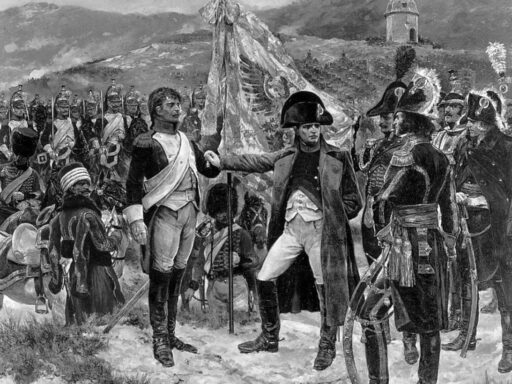The story of the Man in the Iron Mask is based on a real prisoner held in France during the reign of Louis XIV between 1661 and 1703. While the man’s true identity remains a mystery, his existence and the secrecy surrounding him are historically documented. His notoriety grew both during and long after his lifetime, aided by rumors, speculation, and later literary works.
The prisoner referred to as the Man in the Iron Mask was indeed real. Historical records confirm a masked inmate was kept in various French prisons in that period. He died on November 19, 1703. Contrary to popular belief, the mask was not made of iron; evidence suggests it was likely crafted from whalebone and covered with velvet. This mask was typically worn only when he was exposed to others, such as during prison transfers or attending prayers, rather than constantly.
Official documents highlight that the identity of this prisoner was kept under strict secrecy. Measures like wearing the mask and transferring him covertly helped fuel legends around him. Some of these precautions, particularly the masking during chapel visits at the Bastille, might have been introduced by his jailer, Saint-Mars, to enhance the prisoner’s mystery and prestige. This secrecy contributed to a long-lasting intrigue.
The man’s notoriety was not just a modern invention; he was known in contemporary times. For example, a gazette in 1687 mentioned his transfer from one prison to another. Rumors about his identity circulated widely. During his incarceration, people speculated he might have been a French Marshal, a parliament president, the Duke of Beaufort, or even a son of Oliver Cromwell. Interestingly, some rumors were deliberately started by Saint-Mars himself, possibly to obscure the truth further.
Voltaire, the famous French writer and philosopher, played a significant role in shaping the legend. After learning of the prisoner’s existence during his own imprisonment in the Bastille in 1717, Voltaire popularized the theory that he was Louis XIV’s secret twin or an illegitimate brother. Voltaire also incorrectly claimed the mask was made of iron, a description that stuck and became the cornerstone of the legend.
Political circumstances also heightened the man’s fame. During the Nine Years’ War (1688-1697), Dutch pamphlets exploited the mystery as anti-French propaganda. They propagated scandalous rumors, including claims that the prisoner was the Queen Mother’s former lover or even Louis XIV’s real father. Such stories aimed at undermining the king’s legitimacy. Other pamphlets speculated he was a royal bastard or connected to the king’s wife. These rumors circulated widely, increasing public interest and mystery.
The biggest boost to the Man in the Iron Mask’s fame came over a century later from the pen of Alexandre Dumas. Between 1847 and 1850, Dumas wrote an influential novel as part of his Three Musketeers series. His fictionalized account portrayed the prisoner as Louis XIV’s masked twin brother, trapped to protect the monarchy’s secrecy. Dumas’ novel, with its dramatic and romantic narrative, captured the imagination of readers worldwide, cementing the prisoner’s place in popular culture.
| Aspect | Details |
|---|---|
| Existence | A real prisoner held between 1661-1703, identity unknown |
| Mask Material | Likely whalebone and velvet, not iron; worn during transfers and public exposure |
| Secrecy Measures | Masking, silent transfers, and limited exposure to maintain confidentiality |
| Contemporary Awareness | Known in contemporary gazettes; rumors about identity circulated widely |
| Anti-French Propaganda | Dutch pamphlets spread rumors challenging Louis XIV’s legitimacy |
| Literary Fame | Popularized by Alexandre Dumas’s novel in 1847-50 |
The mystery mainly endures because official records withheld the prisoner’s identity. His highly guarded incarceration, coupled with widespread rumors during his life and politically motivated stories, built a legend centuries ago. Later literary dramatization made the tale famous worldwide.
- The Man in the Iron Mask was a real prisoner under Louis XIV’s reign, held from 1661 to 1703.
- The mask was not iron but likely whalebone and velvet, worn to conceal identity during public exposure.
- Secrecy and prison measures fueled widespread rumors from his contemporaries.
- Anti-French propaganda in the late 1600s exploited the mystery to undermine Louis XIV.
- Voltaire spread ideas about the prisoner’s royal connections.
- Alexandre Dumas’s novel popularized the legend globally in the 19th century.
Was the Man in the Iron Mask a real person?
Yes, he was a real prisoner held between 1661 and 1703 under King Louis XIV of France. His exact identity remains unknown.
Did the Man in the Iron Mask really wear an iron mask?
No, the mask was likely made of whalebone with velvet. It was worn mainly during public transfers, not constantly.
How was the Man in the Iron Mask known during his lifetime?
His existence was known, as seen in contemporary prison transfer records from 1687. Rumors and secrecy around him made people curious.
Why did the story of the Man in the Iron Mask become so famous?
Anti-French propaganda spread stories about his identity during wars. Voltaire and later Alexandre Dumas popularized the legend through writings.
What caused the many rumors about his identity?
Strict secrecy led to speculation. People guessed he was a Marshal, noble, or related to the king. The prison governor may have encouraged rumors to boost his own standing.




